No Small Wonder: The Enduring Legacy of Wonder Boy
Journey through the legacy of a classic series
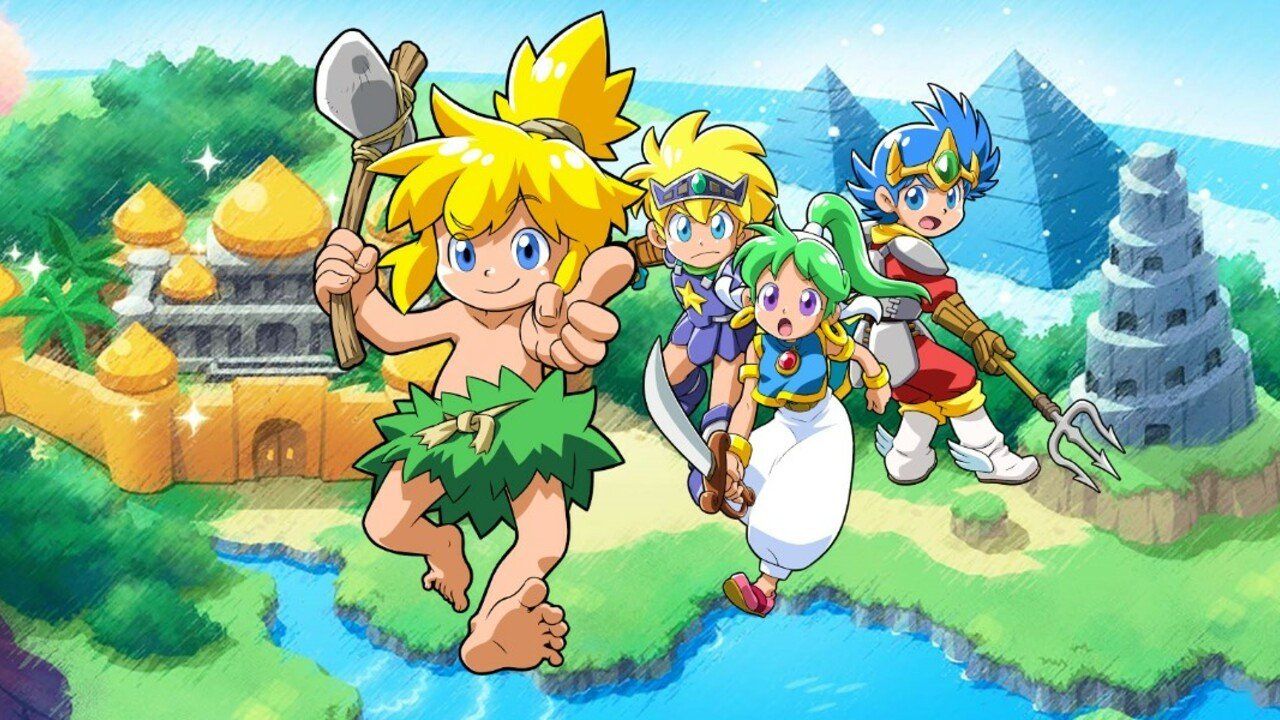
Wonder Boy, also known as Monster World, is a long-running franchise with deep roots in Sega heritage. Spanning six titles across the Sega Master System, Genesis, and Game Gear, countless ports to other consoles, as well as a full reworking under the name Adventure Island by Hudson Soft on the NES and SNES, the series proved to be a stalwart property for Sega to keep in their back pocket. In recent years, many titles in the Wonder Boy series have received total remakes. There also was a brand new entry in the series in 2018, confusingly titled, Monster Boy and the Cursed Kingdom. Of the Wonder Boy series, two things are certain: the naming conventions are all over the place and this franchise has absolutely earned its place in the hallowed halls of gaming royalty.
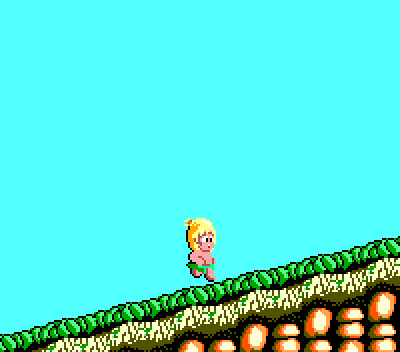
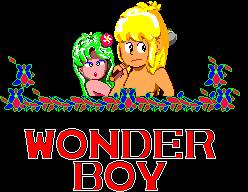
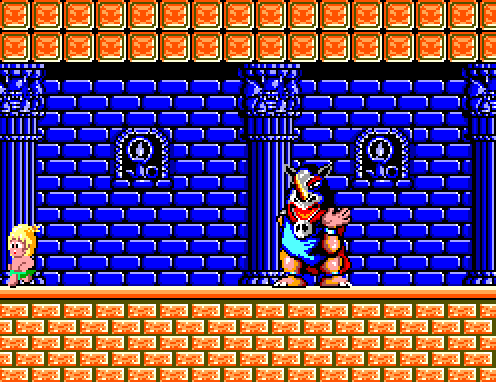
Source: Tumblr and Giant Bomb.
The Primitive Prelude
The original Wonder Boy was released in the arcades in 1986. Later, it would be ported to numerous consoles, including Sega's own SG-1000, Master System, and Game Gear, as well as various home computers like the ZX Spectrum, Commodore 64, and Amstrad CPC. Each of the ports realized entirely different interpretations of the game. The SG-1000, being a game console in its most embryonic state, did not run Wonder Boy as it existed in its original arcade form. This version had to be completely rebuilt to run on the SG-1o00 with bespoke stages and several omitted elements. The Master System and Game Gear editions were the closest to being arcade-accurate, with very slight changes made to account for the limited capability of these consoles. Even the home computer ports could not truly realize the game in its purest form; instead, each of the different editions took various liberties with the game's design.
One of the most intriguing aspects of the original Wonder Boy is how the series served as a backdoor entryway to creating an entirely separate series on the NES and SNES, called Adventure Island. The developers of Wonder Boy teamed up with Hudson Soft to recreate the game with entirely new graphics, an original protagonist, and entirely distinct stages. The original Adventure Island is the only entry to share DNA with Wonder Boy, and the series went on to further separate itself from its once fraternal twin from the Sega library.
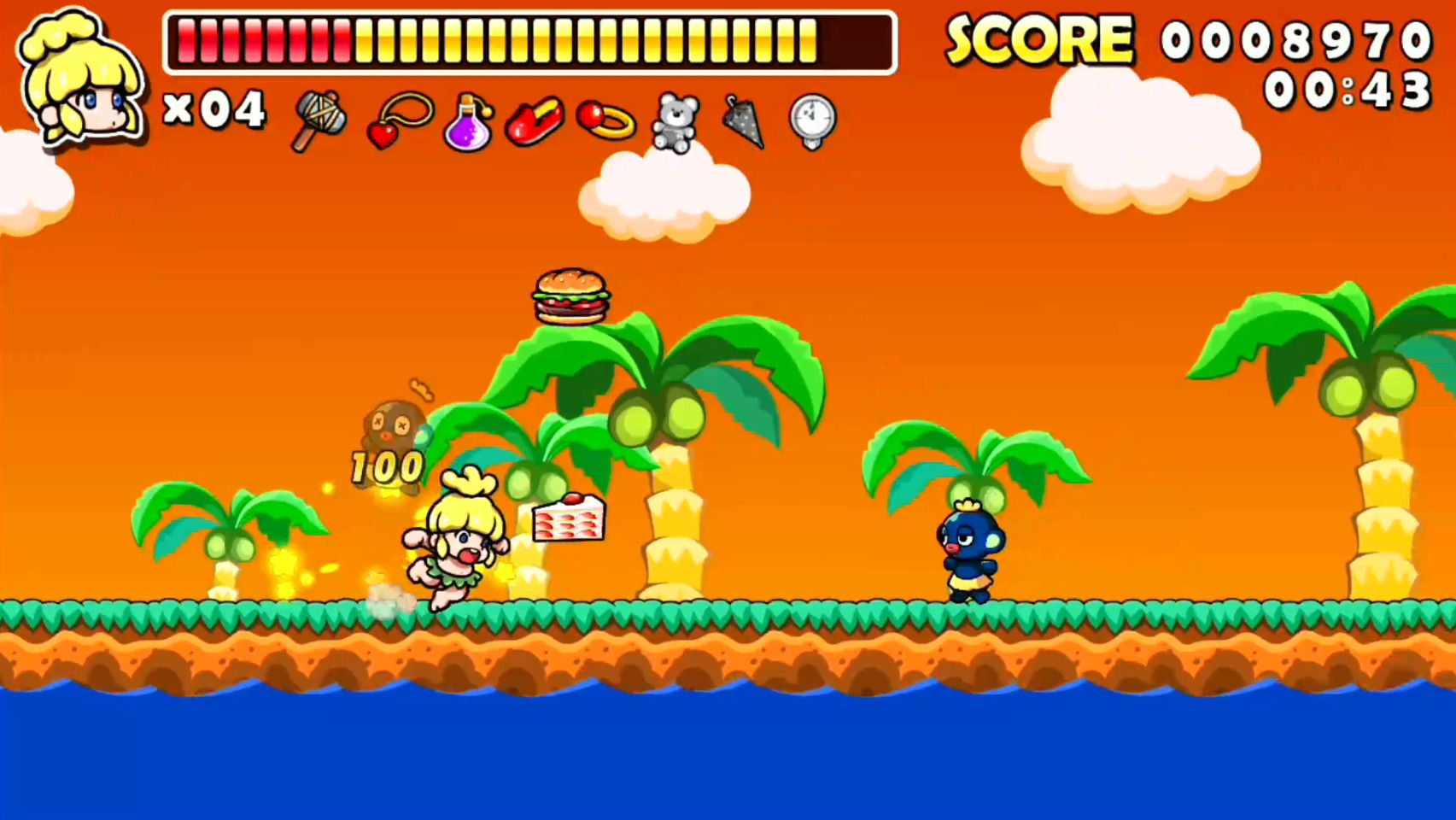
Wonder Boy was a thoroughly charming game, with an adorable aesthetic to boot. This brings me to my next point: the first Wonder Boy received a ground-up remake, dubbed Wonder Boy Returns, in 2016, which itself got a remaster in 2019, called Wonder Boy Returns Remix. This re-imagining of Wonder Boy is somehow even cuter than the original. The gameplay is largely unchanged from the classic version, so it's a perfect way to experience the timeless platforming of the retro version, with a fresh coat of paint and playable on modern platforms, (Steam, PlayStation 4, Nintendo Switch.)
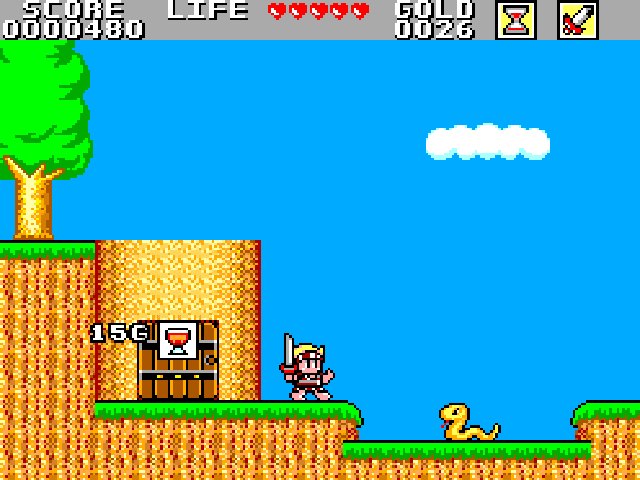
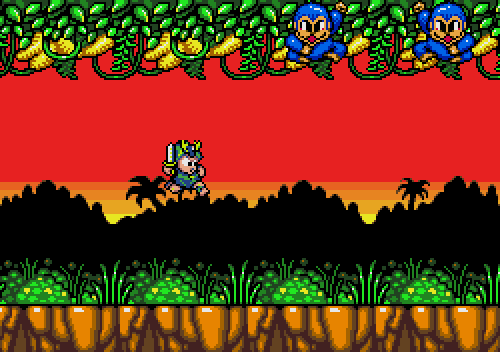
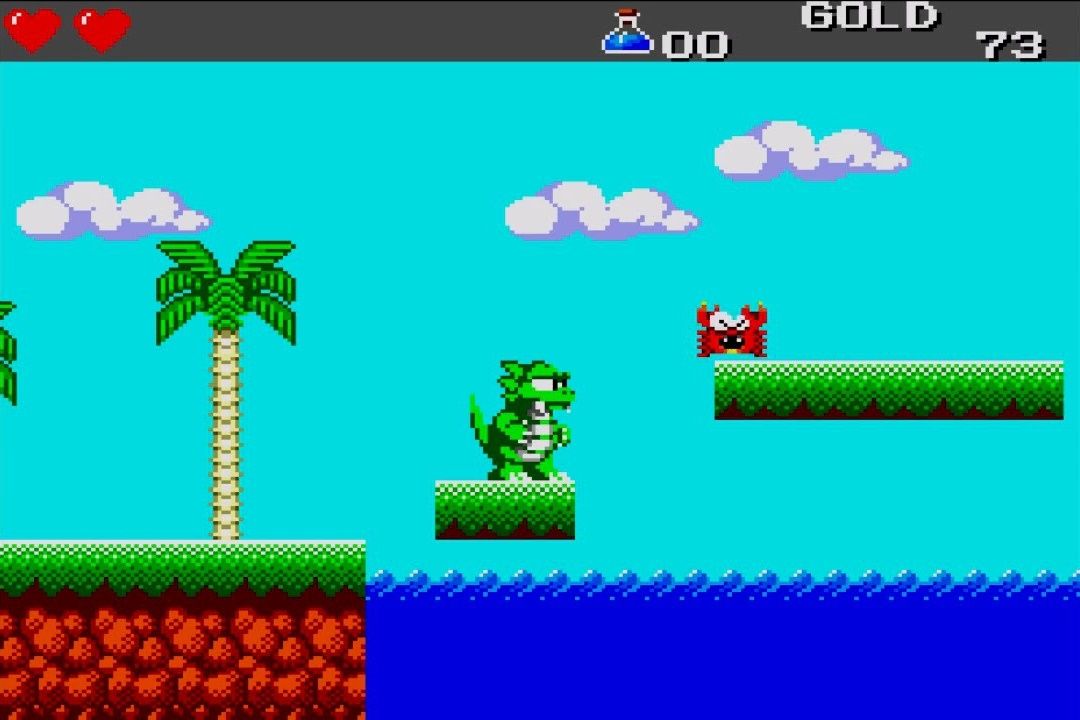
Early Wonder Boy Games. Sources: Retrogames, WiffleGif and Paste Magazine.
The Wonder Years
Wonder Boy opened the door, and it was briskly followed by a procession of sequels that got progressively more impressive. The second title in the overall franchise, Wonder Boy in Monster Land, boldly added layers of complexity to the gameplay. Where the initial title in the series was more or less a straightforward platformer, Monster Land added some basic RPG elements, as the developers were trying to take a cue from titles like Dragon Quest and Wizardry. Wonder Boy could now enter shops to purchase armor, shields, boots, and magic weapons, all of which offered various bonuses to assist in combat and navigating the stages more easily. There were also myriad power-ups scattered throughout stages that provided temporary boons to Wonder Boy, like gauntlets that increased his attack damage for a brief window of time and Wing Boots that allowed him to fly past otherwise frustrating roadblocks. Your sword could also receive incremental upgrades for increased damage.
Wonder Boy in Monster Land took the charming, yet simple conceit of the original game and thoughtfully added depth and role-playing elements that made it feel like Sega's equivalent of Zelda II.
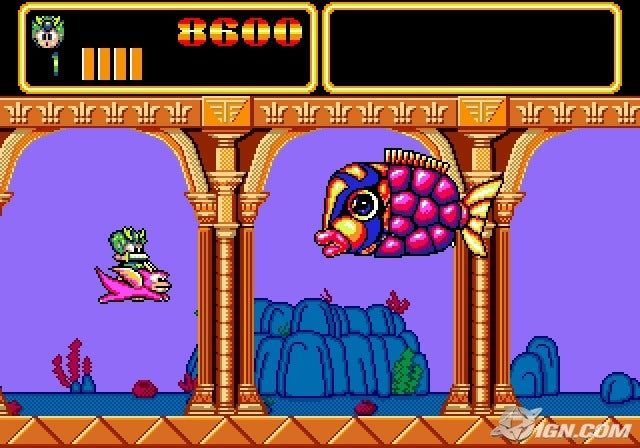
While Wonder Boy in Monster Land built upon every aspect of its predecessor, its own sequel, Wonder Boy III: Monster Lair threw almost the entire concept out and further re-imagined the Wonder Boy gameplay into some sort of hybrid of a platformer and side-scrolling shoot 'em up. Each stage begins with a platforming segment which gives way to a grandiose shoot 'em up portion around the halfway point and culminates with a boss fight. Like any good shoot 'em up, there were several power-ups that could temporarily augment your attacks via their potency, shape, or size. Eschewing the titular character from the previous two entries, Monster Lair chose to feature two new faces: Leo and Purapril. This is their only title in the franchise as playable characters, though their legacy extended beyond their names or faces. Wonder Boy III: Monster Lair was the first entry in the franchise to take Wonder Boy as a title, without featuring the namesake character. This became a commonplace element as the series introduced more protagonists, like Asha, Shion, and Jin, and we would see the titles of the games evolve beyond the Wonder Boy moniker as well.
Wonder Boy III: Monster Lair was an intriguing, though short-lived deviation from the format laid forth by its predecessors. Confusingly enough, there was another Wonder Boy III, one with an even bigger legacy, that has gone on to arguably be the face of the franchise.

Wonder Boy III: The Dragon's Trap, originally released in 1989, has more or less become the bellwether of the entire Wonder Boy/Monster World franchise. Building off the foundation that Wonder Boy in Monster Land established, Dragon's Trap maintained the medieval setting, shops, armor, and items and thoughtfully added a defining characteristic: shapeshifting. As you progress through the stages of the game, beginning with the first level, Wonder Boy is morphed into various animal forms, each of which possesses their own perks and downsides, and the stages will be largely centered around whichever form you were converted into most recently. For example, Mouse-Man can enter small locations and walk on specifically designated walls and ceilings, Piranha-Man can freely traverse underwater stages and Hawk-Man can nearly break some stages by just soaring over enemies and obstacles.
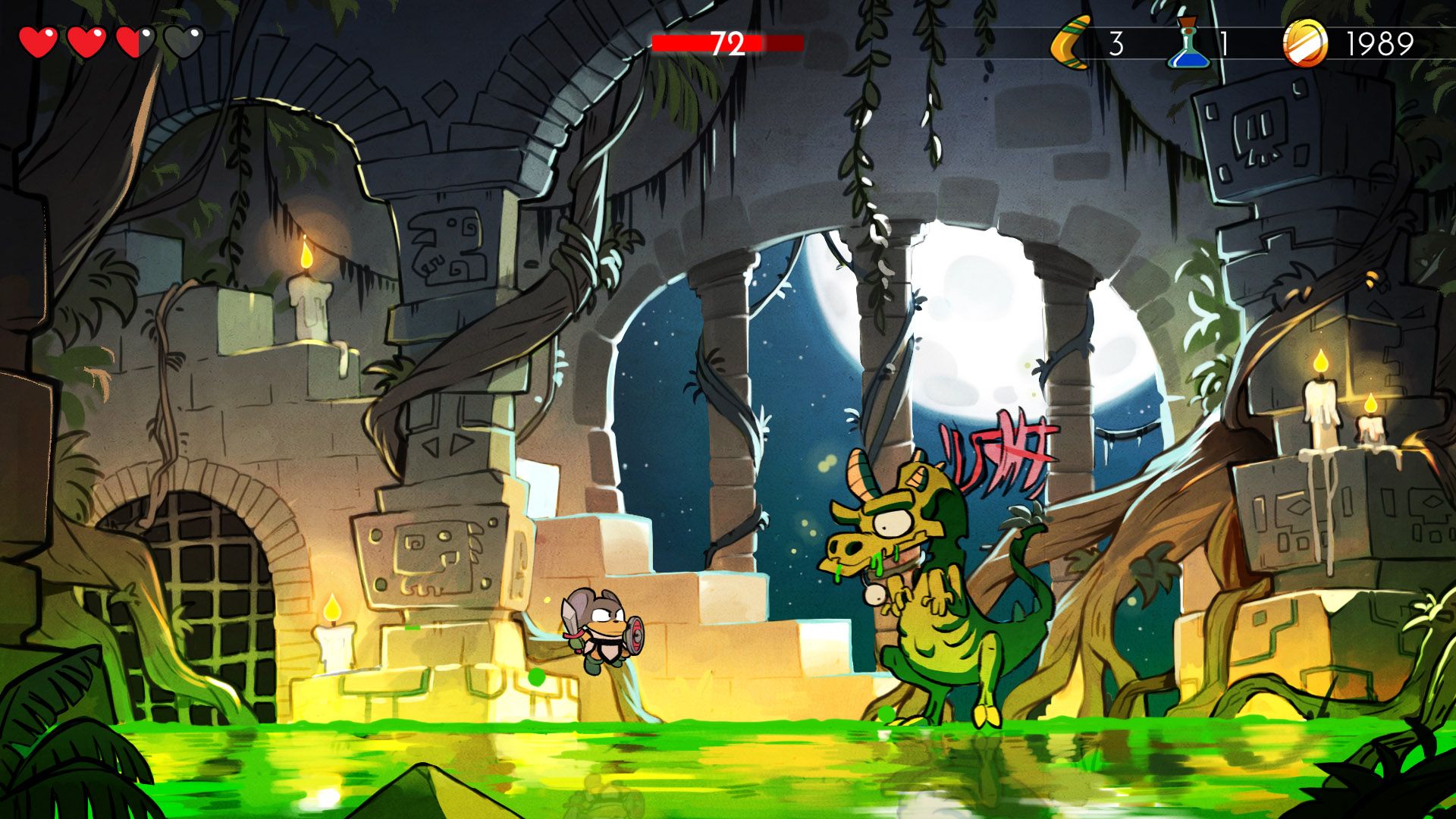
In 2017, Wonder Boy III: The Dragon's Trap received one of the most gorgeous remakes that I have ever seen for a video game. Dropping the "III" from the name, Wonder Boy: The Dragon's Trap was developed by the technical wizards at Lizardcube (makers of the incredible Streets of Rage 4) and published by Dotemu, who seemingly have the Midas Touch. The remake of Dragon's Trap was done in entirely hand-drawn art, with an infectiously appealing style that oozes charisma and charm from the smallest details to the grandest gameplay sequences. As much as I want Lizardcube to make wholly original games based on their own concepts and properties, I'd love for them to remake the rest of the Wonder Boy series in this same aesthetic.
From the moment I saw the first trailer for the Dragon's Trap remake, I was absolutely smitten with their take on the classic game and upon playing it, I highly recommend it.
Alpha and Omega
The transition to the Sega Genesis/Mega Drive consoles should have been the beginning of a new, beautiful, 16-bit halcyon era for the Wonder Boy franchise. Instead, this generation only saw two entries in the series and then it was put on ice for decades, well past the tragic exit of Sega from the console manufacturing business. Somehow, Sega did not find a way to make one of their most iconic series effectively progress onto their most successful console. I have to imagine that the breakneck pace at which Wonder Boy games were released on the Master System and Game Gear probably exhausted most of the interest that their audience had in the franchise, and as the industry evolved, much more compelling new series were released and Wonder Boy was viewed as old hat. Wonder Boy, in a poetic sense, passed the torch on to Sonic the Hedgehog.
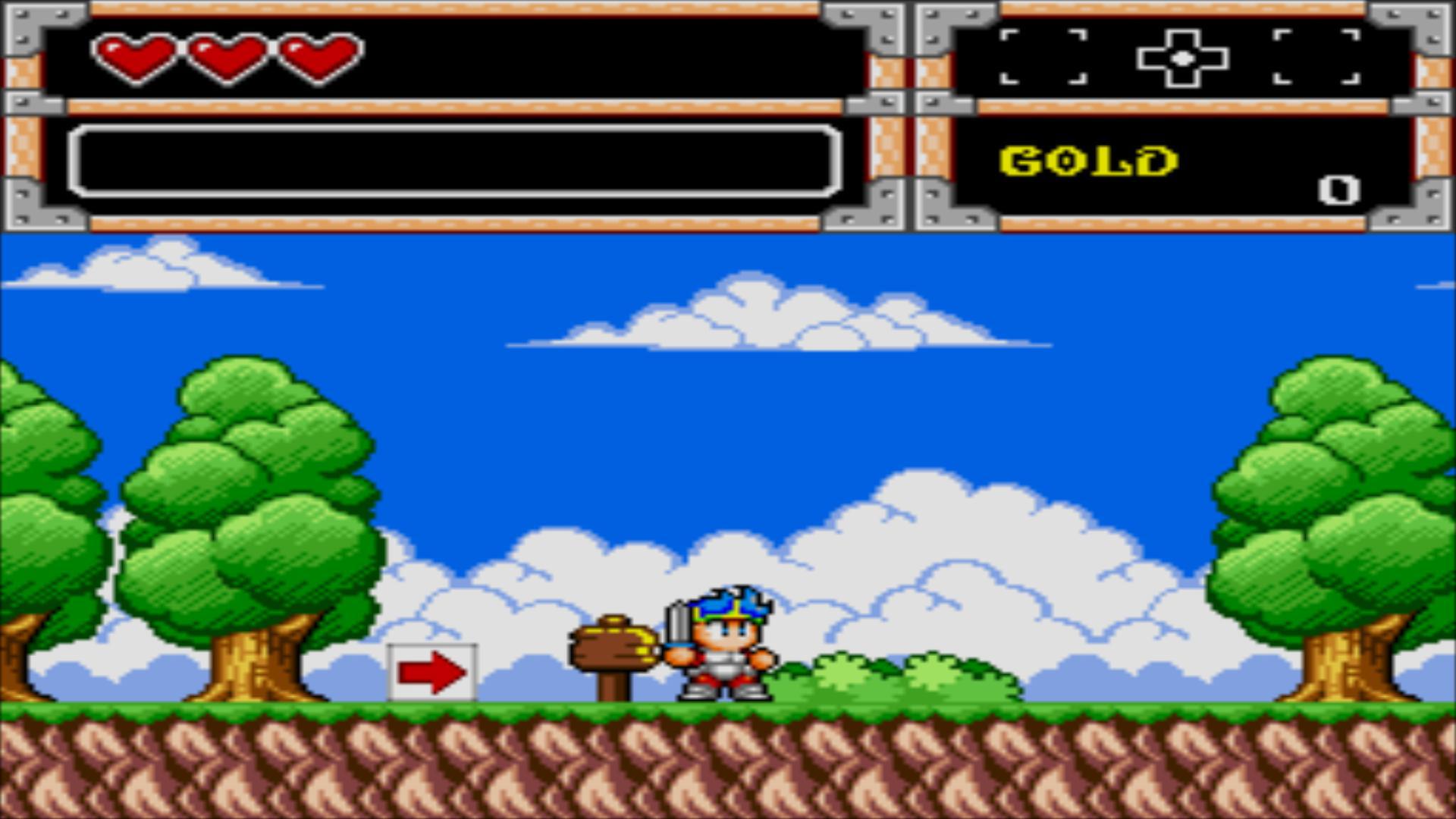
The first of the two Wonder Boy titles on the Genesis/Mega Drive was Wonder Boy in Monster World, released in 1991. The game is essentially a 16-bit adaptation of Wonder Boy in Monster Land; perhaps the almost identical naming convention is a hint at the connection between the two. The barebones plot is different from Monster Land, but the gameplay is largely the same. It is still a platformer with a basic Zelda-style RPG framework around it that consists of purchasing weapon upgrades, armor, and magic spells, as well as collecting hearts to extend your vitality meter. I would say if you've played Wonder Boy in Monster Land from the Master System, you're probably safe skipping this title in the franchise unless you're a super fan of the series or you just want to see what the series' switch to 16-bit graphics looked like. The graphical upgrade is quite easy on the eyes.
Wonder Boy in Monster World is a pretty game, with the same core gameplay elements as prior entries in the series. It does lack the intriguing shapeshifting aspect from The Dragon's Trap, however, which leaves this game feeling like it took one step forward and two steps back in many ways. It did not do enough to set itself apart from its predecessors, in my opinion. The transition to the Genesis should have been the series' attempt at something grander; an evolution of the franchise. Unfortunately, this was the series' last release outside of Japan.
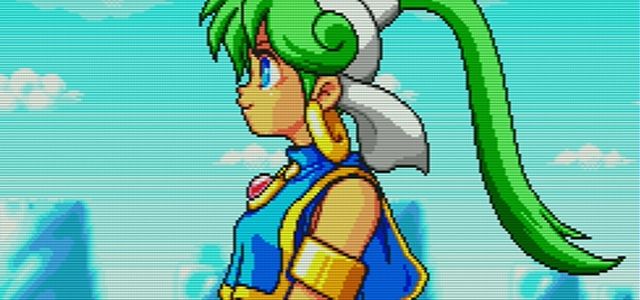
Almost as if in answer to the underwhelming Wonder Boy in Monster World, the next (and final) original game in the franchise went out with a huge swing and is fondly remembered for its bold innovations to the formula. Suitably dropping the Wonder Boy name, Monster World IV was the first title to have only a female protagonist, the neon green-haired Asha, and was released exclusively in Japan in 1994. The franchise had been using the Monster World moniker in Japan to specify which titles take place in the titular Monster World, which has led to great confusion over the proper name of the overall series throughout the years.
Monster World IV was still true in spirit to the prior games in the series, but there were some key changes and enhancements to the core gameplay experience. Asha could do directional slashes in midair, as well as using her shield while in a standing stance, adding more dynamic action to combat. A larger new element included in this game was the inclusion of Asha's pet Pepelogoo, a flying creature that could assist Asha in several ways, such as slowing her descent, giving her the ability to double-jump, using his body as a platform for her to cross treacherous terrain, and even blowing out fires that might be blocking Asha's path. Much of the central loop of the previous entries in the series remained familiar, like the purchasing of armor and weapons, and finding health bar increases in the stages. One of the other major differences in Monster World IV from the other titles was that stages were not revisitable. If you did not gather everything you needed in a particular level, you could not return, meaning that you could permanently miss some items and power-ups.
It is a shame that we did not receive Monster World IV in the West until 2012 when it was ported to Xbox Live Arcade and the PlayStation Network. The game still looks absolutely incredible and is considered one of the best in the franchise.
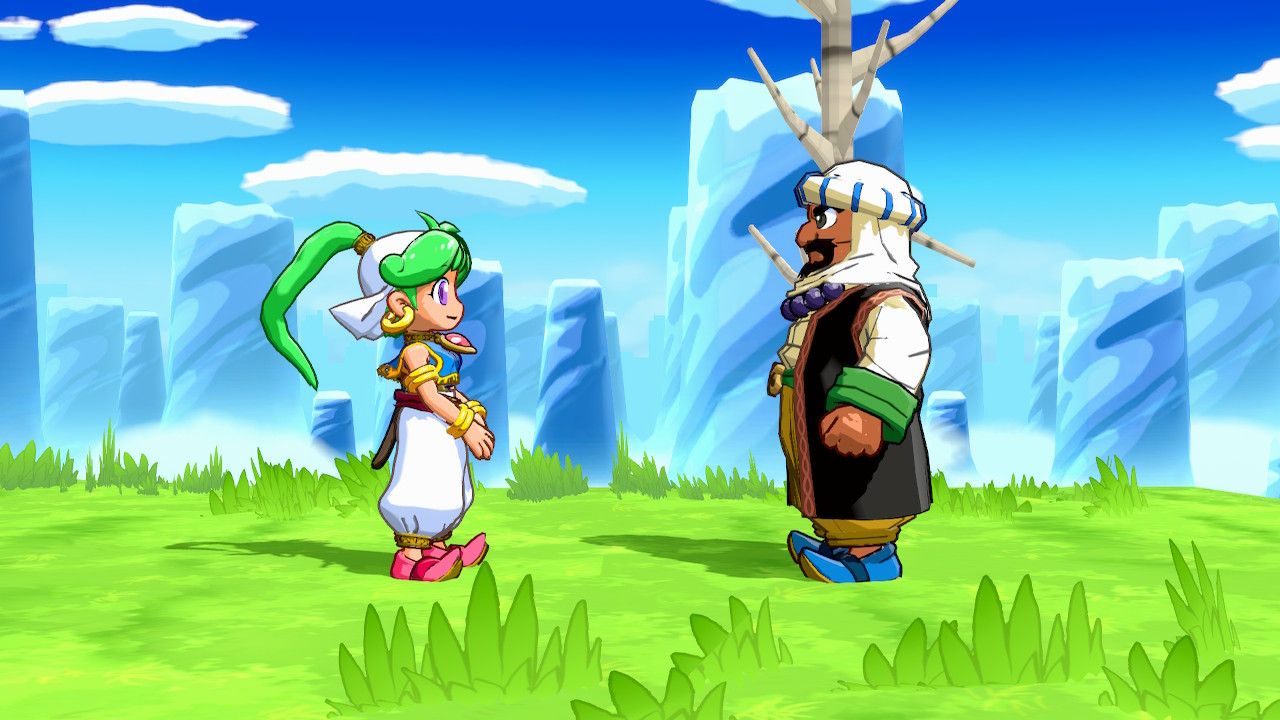
Fittingly, Monster World IV was the latest title in the franchise to receive a remake. Changing the name yet again, to further align with the greater Wonder Boy series, the remake is under the name Wonder Boy: Asha in Monster World. Developed by Artdink, and released in 2021 for PlayStation 4, Nintendo Switch, and PC via Steam, Asha in Monster World reimagines the classic pixel art in 3D graphics. This remake plays very similarly to the original release, but there are some improvements to the gameplay. Consecutive attacks now accumulate in a gauge to ultimately produce a "Magical Hit," a special attack that deals considerably more damage. Some other quality-of-life adjustments include a save-anytime function (except during boss fights), and the ability to return to prior locations and dungeons, which was not possible in Monster World IV.
Changing of the Guard
The Wonder Boy series was effectively dead. There was the aforementioned 2012 Xbox 360/PlayStation 3 port of Monster World IV, finally bringing the game stateside. A few years later we got the remake of the first Wonder Boy title. It felt like the series was maybe starting to show signs of a pulse. Then the 2017 remake of Wonder Boy: The Dragon's Trap hit the scene. Like many others, I was unfamiliar with the series, as it had been mostly silent since 1994, the year after I was born. The art style and overall charm of the remake swept me into a sudden affection for this series. I wanted to check out the other titles, and familiarize myself with what Wonder Boy was all about.
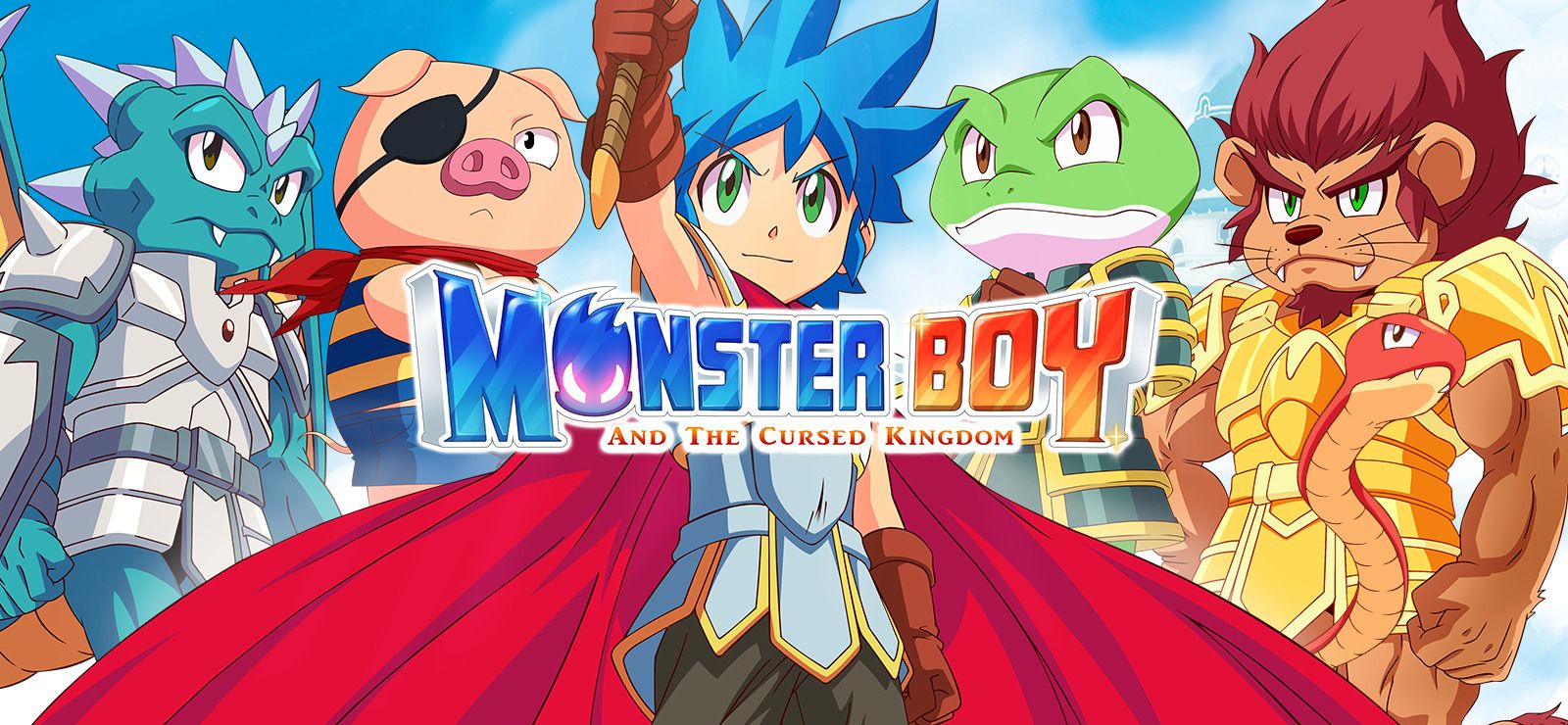
To my pleasant surprise, twenty-four years after the last original Wonder Boy title, fans have received a new game. Somehow the series managed to add a third title variation into the mix, which bounced from Wonder Boy to Monster World, and now Monster Boy and the Cursed Kingdom. Title obfuscation aside, Monster Boy is phenomenal. Hearkening most obviously back to Wonder Boy: The Dragon's Trap, this title is all about shapeshifting. It feels like the sequel that Dragon's Trap should have had all those years ago. Our new protagonist, Jin, can shapeshift at will to any form you have unlocked. The forms are Pig, Frog, Lion, and Dragon, each of which has special abilities to assist Jin on his journey.
Like the Wonder Boy titles before, you can purchase armor, swords, and magic, but they can all be incrementally upgraded, provided you have the requisite materials. There is a map to show off the massive, interconnected world, and the locations on the map fill in as you explore. Fast-travel teleporters can be found across the map which makes revisiting locations a breeze. There is an auto-save function too, saving the game when Jin crosses through altars that are scattered across the world. Dying has no downside, and just returns Jin back to the last checkpoint.
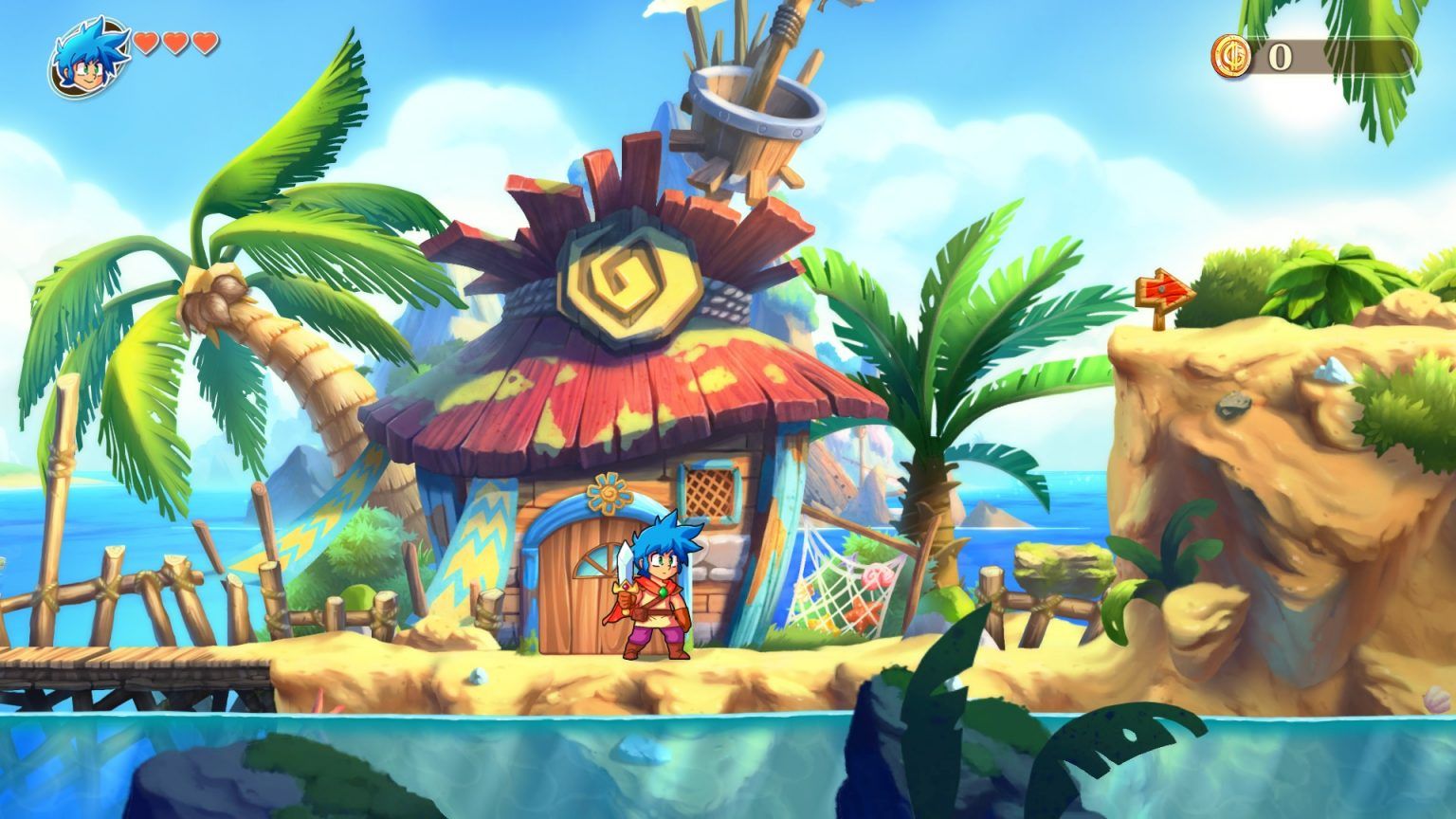
Between the gorgeous graphics, loving homage to past Wonder Boy titles, and completely rock-solid gameplay and innovations to the past formula, Monster Boy and the Cursed Kingdom is an incredible Wonder Boy game in its own right. It fits snugly into the series as a contemporary entry and is hopefully a harbinger of good omens for the beloved series' future.
Some Kind Of Wonderful
The Wonder Boy series has many titles, and while most of them are fun, only a few truly stand out from the pack. I'd highly suggest checking out Wonder Boy: The Dragon's Trap remake and Monster Boy and the Cursed Kingdom for some modern iterations of the franchise. Interestingly enough, the developers of both amazing recent titles in the series hail from France. Maybe the mantra going forward should be "Wonder Boy should return, as long as the French are behind it."
Joking aside, I hope this retrospective has been an interesting history lesson on a series that I really think is quite special. There are ways to play every title in the series on modern platforms too. The Wonder Boy Anniversary Collection includes all of the classic versions of every Wonder Boy game from the first all the way through Monster World IV. Then there are the remakes of the original game, Wonder Boy: The Dragon's Trap and Monster World IV that are absolutely worth checking out. Do yourself a favor and check these games out, you'll have a wonderful time. I guarantee it.
